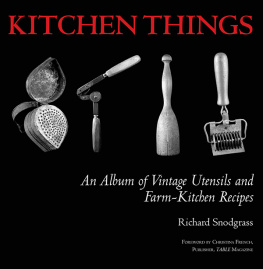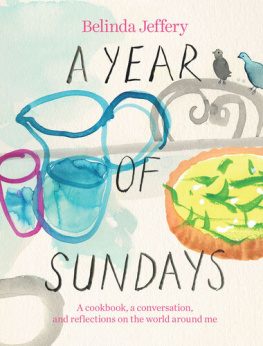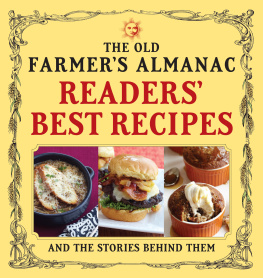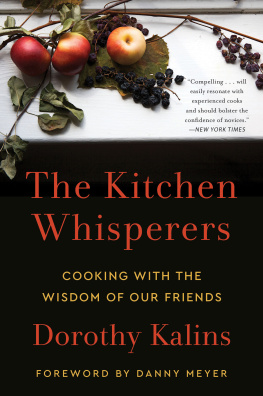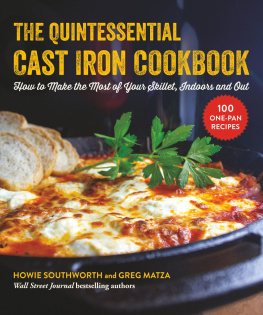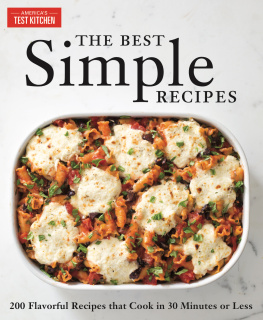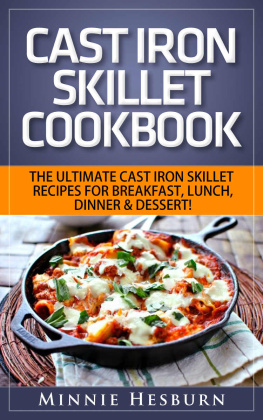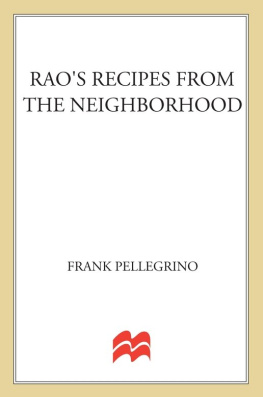KITCHEN THINGS

KITCHEN THINGS
AN ALBUM OF VINTAGE UTENSILS AND FARM-KITCHEN RECIPES
Richard Snodgrass
Foreword by
Christina French

Skyhorse Publishing
This is Martys book.
In general, nothing which is intuited in space is a thing in itself, and that space is not a form which belongs as a property to things.... Objects are quite unknown to us in themselves... [they are] mere representations of our sensibility.
Immanuel Kant
* * *
The moment one gives close attention to anything, even a blade of grass, it becomes a mysterious, awesome, indescribably magnificent world in itself.
Henry Miller
* * *
Things do not exist without being full of people.
Bruno Latour
CONTENTS
FOREWORD
The eighteenth-century French epicure and gastronome Jean Anthelme Brillat-Savarin once said, Tell me what you eat, and I will tell you what you are.
As publisher of a food magazine, I have the unique challenge of communicating this genuine power and presence of food in our lives. The challenge is rooted in the multitudes of misperceptions regarding our modern food experience: fast food, Hollywood diets, vanishing family dinners, excess and associated disease, etc. Every day, food is dissected, deformed, packaged, marketed, and consumed with more consideration and controversy than ever.
If I had to define a single purpose for TABLE Magazine, it would be to simplify this conversation. Slow it down. Bring food off of such a dysfunctional stage of critical performance and bring it back to our homes, our table, and our lives.
This is why the work of Richard Snodgrass has graced the pages of my publication since the first issue in 2006. Richard captures the power of this simplicity like no other artist. One simple kitchen thing sparks a conversation, a memory, and most importantly, a story told through the lives of his wife Martys family members.
Richard tells stories about how a cherry pitter, dish towel, or egg cup can richly define who people are, how they live and how they lovingly (and often satirically) share the experience or history of food in their family. On their own, the images communicate an almost animal-like or unexpected human quality to the kitchen things. When paired with Richards uncommon storytelling, the reader forms an even deeper appreciation for the true character of each thing based on the personality of the cook, the economic and cultural necessity of the times, and the influence of family tradition.
The stark simplicity of Richards black-and-white format, the saturation of lighting, and his careful positioning of each kitchen thing, all help to bring a quieting focus to the importance of how an individual item can tell the story of peoples lives.
When food and photography meet, many things can be expectedits quite a popular topic for todays art and journalism professionals. But, in the case of Richards work, the unexpected is delightful, as we never see the food itself. The stories of a family are told through the daily routines, specials occasions, and functional roles that a kitchen thing provides.
I like to think of Richard Snodgrass as a modern-day Brillat-Savarin, who would say, Show me your kitchen things, and I will show you who you are.
Christina French
Publisher, TABLE Magazine
CAKE SERVER
Let them eat cake, as Marie-Antoinette famously said during a time of famine, the epitome of the callousness of the Haves toward the Have-Nots, helping to make the lady, Madame Deficit as she was known, a reviled figure down through the ages. Except Marie-Antoinette wasnt the one who said it.... Who actually did, though, is up for grabs. It was probably Marie-Thrse, the wife of Louis XIV, one hundred years before Marie-Antoinette was born. Fact is, Marie-Antoinette was a generous patron of charity and quite concerned about the plight of the poor, though it sometimes had to be pointed out to her. Whats more, there were no severe famines during the reign of her husband, Louis XVI. There wasnt even cake as we know it; the statement refers to brioche, a luxury bread enriched with eggs and butter.
You could write a book about the history of cake, and many people have. One problem with relating the history of cake is that its hard to define exactly which ingredients to include. Cakes date back more than two thousand years, the one common ingredient being flour, which is why cakes and breads are often interchangeable through the ages. The precursors of modern cakesround with icingwere first baked in Europe in the mid-1600s, though it wasnt until the 1800s that cakes as we know them, made with extra refined white flour and baking powder instead of yeast, came about. Cakes are thought to be traditionally round because ancient breads and cakes were made by hand and naturally relaxed into rounded shapes; the ancients also used them in religious ceremonies and their rounded shapes symbolized the sun and moon and the cyclical nature of life. Early Americans considered cake a symbol of well-being, and we continue to serve cakes at holiday, birthdays, weddings, funerals, and baptisms. In other words, if its a significant event, let them eat cake.
In keeping with that social convention, this particular cake server, picked up at a flea market, bears the legend on its handle, McDonough Funeral Parlor, Beallsville, PA. A marketing effort to keep the facilitys name close at hand (as it were) as the mourners attended an after-funeral dinner. Though I guess calling it an instrument of death would be facetious even for me.

RINK-TUM-DITTY
No one seems to know where the name comes from, but cookbooks from New England to Arizona to the Hickory Womens Club seem anxious to claim it as a particular regional favorite. Some consider it a version of Welsh rarebit with tomatoes or tomato soup replacing the beer, to be served on toast or crackers, though this recipe is noticeably plain. When Chub reads it over, her pronouncement is, Its a glorified version of scrambled eggs and tosses it to the side of the table.
Ingredients and Method
2 onions diced and cooked slowly in 2 tbsps. butter. Melt 12 lb. cheese in pain over low fire. Add onions to cheese, then add 3 beaten eggs and 1 cup of milk and cook slowly until thick. Serve immediately on toasted bread or crackers. Garnish with paprika if you like.

And so on and so forth, Chub says. A phrase she uses when she has nothing more to say on a subject. It is apparent that this segment of looking through recipes is drawing to a close.
So, were you a better cook than Aunt Libby? I ask, trying to get a rise out of her. But Chub considers her answer carefully.
I dont know if she ever had the chance to be a good cook. She collected recipes, thats where all these come from. But these are all recipes from other people, not recipes that she developed herself. In reality, Libby and Jessie, they were two old maids, cooking old maid meals for each other.
Chub shrugs her regrets and closes the recipe box, effectively putting a lid on the subject.


